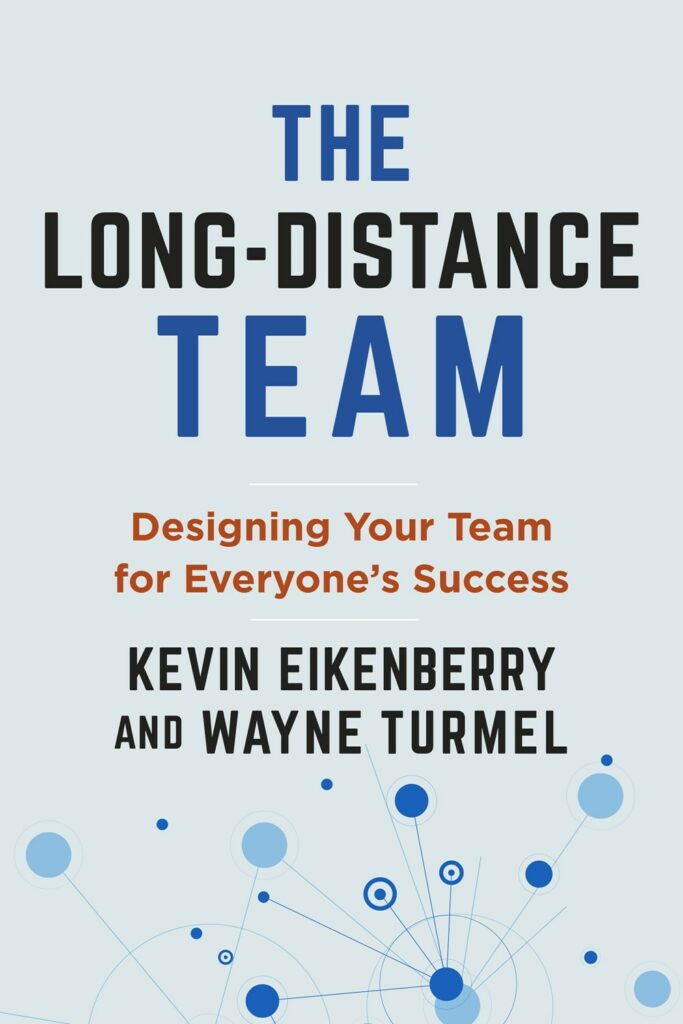If you are designing for any team, particularly a hybrid team, think of it as designing something unique. Take the opportunity to really change how you and your teamwork. We talk a lot about culture being how things get done on your team, but what kind of things are we talking about? It can feel mysterious and vague. It shouldn’t. The goal is to create an equally useful and usable model to help you design or redesign your team for long-distance work. As with the other models, we believe the power of the 3C Model lies in simplicity. This model will help you design your team and your culture.
The 3C Model consists of three factors, and its power comes from integrating them and recognizing that they are interdependent on each other. The 3Cs are
- Communication
- Collaboration
- Cohesion
Communication
Communicating is fundamental to being human—we have been communicating our entire lives. It is also a foundation of work. Although we all communicate, the skill, accuracy, and effectiveness of that communication vary widely. Communication is successful when messages are sent, received as intended, and mutually understood. In short, message sent, message received, message understood.
Everyone’s work requires communication, and all work will be more successful when communication outcomes are more effective and achieved more rapidly. In an interconnected and interdependent world, even the individual craftsman needs to communicate with customers and suppliers.
Therefore, communication is critical and foundational to all work, and no matter how long we have been doing it or how well we do it, we can improve. When everyone was in the same building or location, we could have direct, immediate, rich, face-to-face conversations. As the barriers and challenges to great communication have grown, our need for it to be more effective has grown too.
Communication must be effective in every part of your organizational activities.
Collaboration
Merriam-Webster defines collaborate as: To work jointly with others or together, especially in an intellectual endeavor.
What jointly and together meant seemed much clearer when everyone worked with each other in the same building. When Gina needed to collaborate with George, she stopped by his office or cubicle and asked if he had a few minutes. Often the collaboration happened immediately. When Juan wanted some input on a problem, he might gather three or four people (or call a quick meeting in the conference room) to create that moment of collaboration. When the people you want to collaborate with are in other parts of town, the country, or the globe, it doesn’t seem as easy.
Most people have found that collaboration is harder virtually than face-to-face. There is no doubt that there are advantages to face-to-face collaboration (our long-standing virtual team looks forward to our infrequent in-person meetings). However, meeting distantly can have positive, often unexpected, advantages.
For example, collaboration isn’t just an event. Collaboration can exist without and beyond a meeting. There is something about the energy that can come from an in-person meeting, but we have both also spent decades hearing from people about how ineffective meetings are. If you think about collaboration as taking place only at formal (or even informal) meetings, you aren’t thinking about this subject as broadly as you could or should be.
Cohesion
The third part of the 3C Model is cohesion. Here is the first definition from Merriam-Webster:
The act or state of sticking together tightly.
Is it paradoxical to stick together tightly if we never (or rarely) work in physical proximity?
Perhaps if you think literally, but let’s not stop there.
The second definition ties the word to biology and the life sciences: The union between similar plant parts or organs.
We like the biological connection and connotation of the word, and it’s why we chose it. Work and working relationships aren’t solely mechanical or defined by org charts, time, and space. Cohesion implies something beyond those things.
Each of these dimensions is critical to team success.
Again, our experience may cloud our judgment here—we may think about how these things may be easier to create or sustain when we are in person. Although that point can be made, look at any one of these items, and you can also make a case for doing them at a distance and in unexpected ways.
New ways of working require new ways of thinking about how we communicate, collaborate and come together to get the job done.
Excerpted from The Long-Distance Team: Designing Your Team for Everyone’s Success (Berrett-Koehler).
About the Authors:
Wayne Turmel is a master trainer and coach at The Kevin Eikenberry Group. His work has helped organizations on four continents develop the communication skills needed to lead people, projects, and teams and to make the adjustment to remote working and virtual teams. He is the host of The Long-Distance Worklife Podcast and is the author of several books, including The Long-Distance Team: Designing Your Team for Everyone’s Success alongside Kevin Eikenberry. Kevin Eikenberry is a recognized world expert on leadership development and learning and is the Chief Potential Officer of The Kevin Eikenberry Group. He has helped organizations across North America and leaders from 53 countries with leadership, teamwork, communication, and more. He is the host of The Remarkable Leadership Podcast.
The best career growth can come out of career setback(Opens in a new browser tab)
By Wayne Turmel and Kevin Eikenberry
